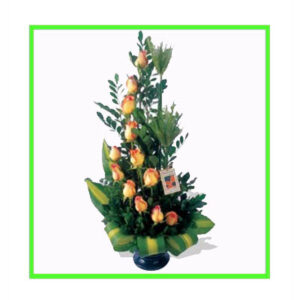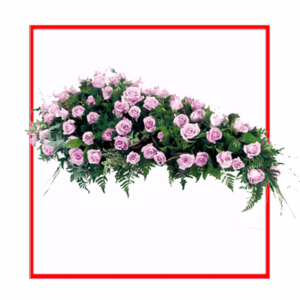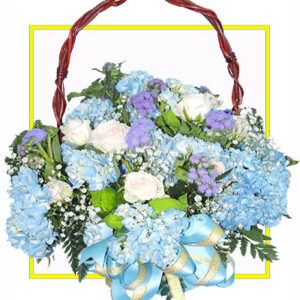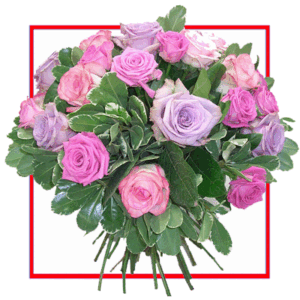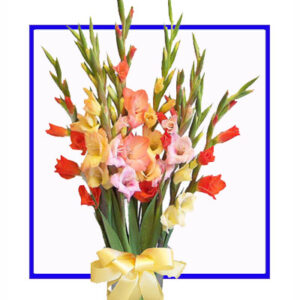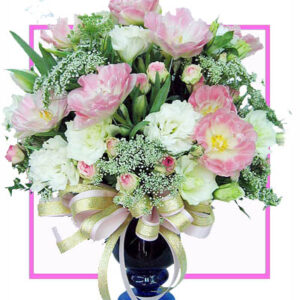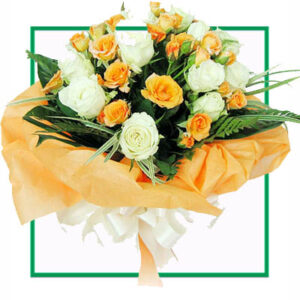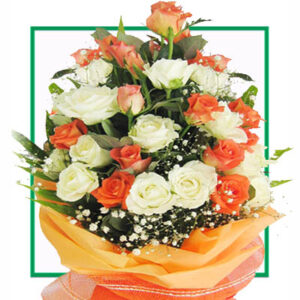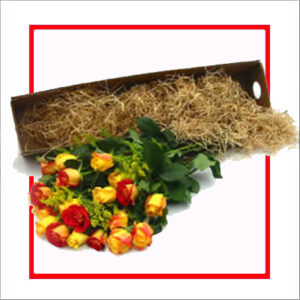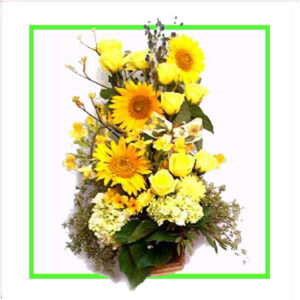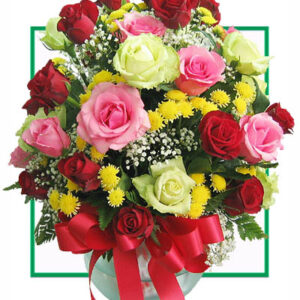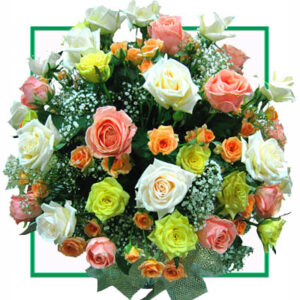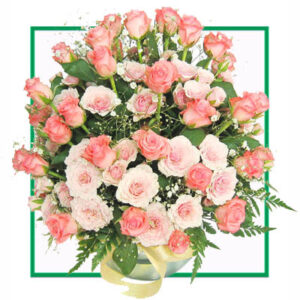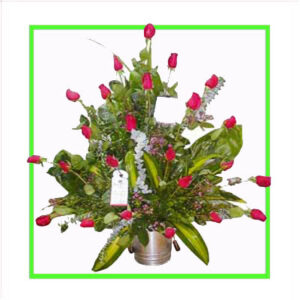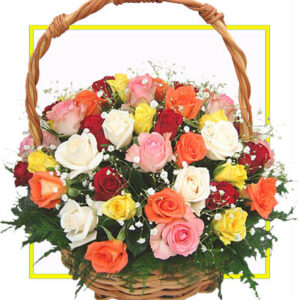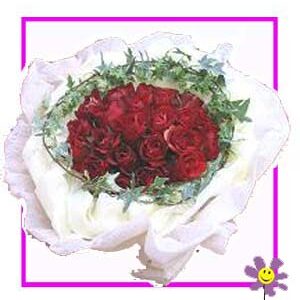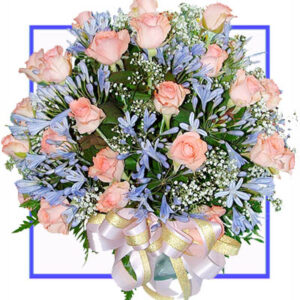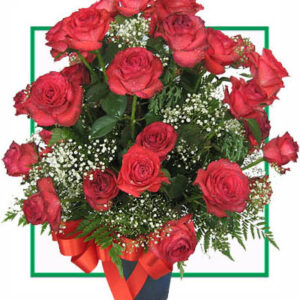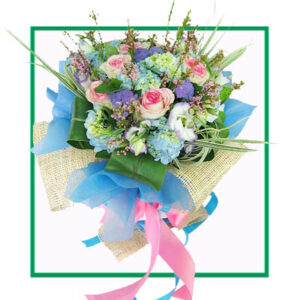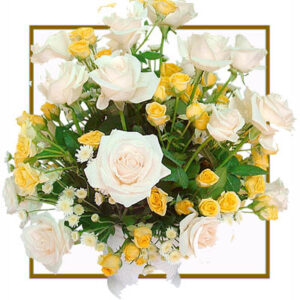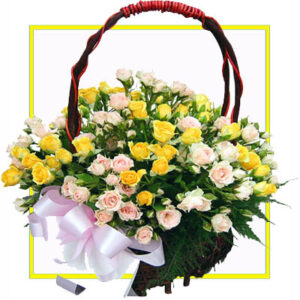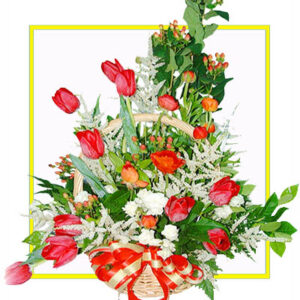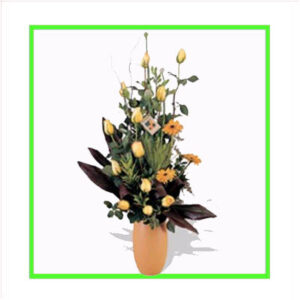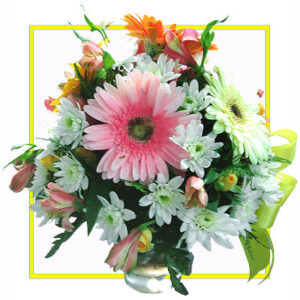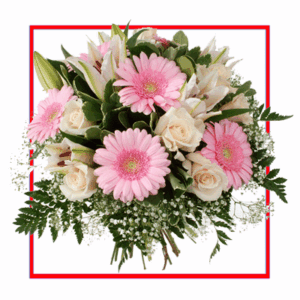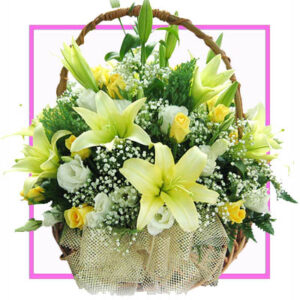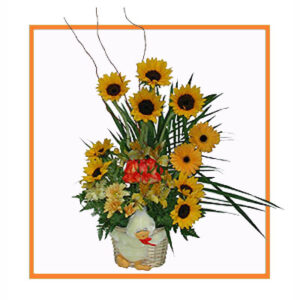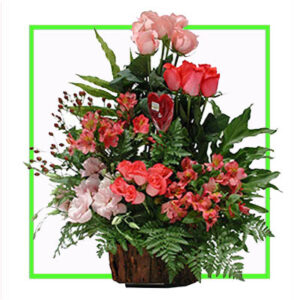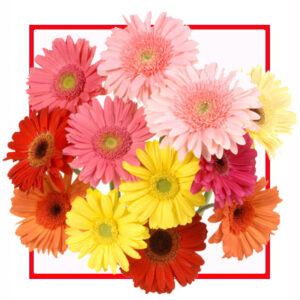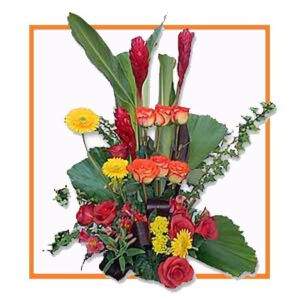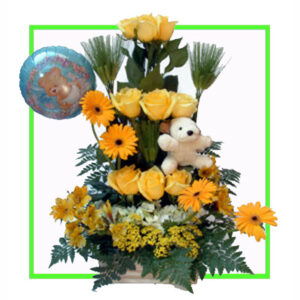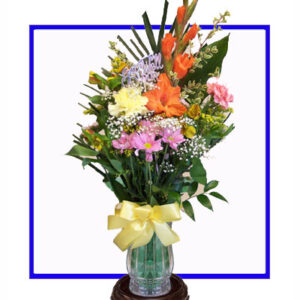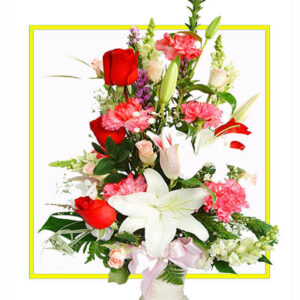In 1889 a cotton-spinning and weaving mill was erected in Aurangabad city, which employed 700 people. With the opening of the Hyderabad-Godavari Valley Railways in the year 1900 several ginning factories were started. In the Jalna alone there were 9 cotton-ginning factories and 5 cotton-presses, besides two ginning factories at Aurangabad and Kannad, and one oil- press at Aurangabad. The total number of people employed in the cotton-presses and ginning factories in the year 1901 was 1,016. The first Cotton Ginning & Pressing Factory was established in the year 1863 by Mr. Pestonji Meherwanji a wealthy Merchant belonging to the Jalnawalla family. The Jalnawalla family owned 6400 acres of land and 17 cotton Ginning & Pressing factories in the Nizam State. Under the plans of Maharashtra Industrial Development Corporation (MIDC) an industrial area has been set up in Jalna. Consisting of large-scale, medium scale and, Small scale industries. Jalna industrial area has a large number of steel rolling mills, NRB Bearings a unit manufacturing ball bearings,Bhagyalaxmi Rolling Mill Pvt.Ltd.(POLAAD) a unit manufacturing of construction bars in brand name POLAAD, agro based units like dal mills and most significant being large number of seed manufacturing units; Mahyco, Mahindra, Bejo-Shital are some of them. The MIDC has recently announced to set up bio technology park (BT Park) at Jalna with the help of private sector units. This park will give a tremendous boost to the BT sector in the backward area of Marathwada. Cotton Market of Jalna is well known in surrounding area.
Jan Alla Shah’s darga at Jalna was erected in A.D. 1681, and consists of a room 20 feet square, covered with a bulbous dome. There is only one door, with a portico in front supported on four wooden posts. A projecting cornice runs round the top of the side walls, and rests on small blocks or drops, beneath which are a series of little arched recesses. The four corners are built up in an hexagonal form, and rise into minarets, carrying four little towers, each surmounted with a bulbous dome and spire. The veranda posts are neatly carved, and have wooden brackets which meet one another, and form elegant scalloped openings under the architrave. A stone wall surrounds the darga; the gateway has an arched opening adorned with minarets; and a similar arched entrance with minarets is on the opposite side. A second stone wall runs along the bank of the Kundalika, which is faced with masonry down to the bed of the river. This and the inner wall are relieved by minarets rising at intervals, and are further ornamented with arched recesses, some of which are filled with perforated masonry work. The inner enclosure contains the dargas of Jan Alla, and of his brother Bab Alla, together with a masjid, zanana, and open-fronted buildings all round for travelers. The darga is well situated on the right bank of the Kundalka River, and the neat dome and the numerous minarets and ornamental compound wall, mingle picturesquely with the dark green foliage of the garden.
After an absence of twelve years Jan Alla was instructed to proceed to Jalna, which he did by way of Baghdad. On arriving at Aurangabad, he occupied a chamber on the left of the Jumma masjid of Malik Ambar, and was quite a recluse, performing the “Sunnat” prayers in his own room, and only the “Fars” prayers in the mosque. His sanctity was noised about, and he was invited to Jalna by haji Bur Khurdar the faujdar. Aurangzeb also wished to see him and went for the purpose to the Jumma masjid, and even to the ” Hujra” or chamber, but did not succeed in his object. A copy of a letter is still shown, which is said to have been written to Jan Alla by order of Aurangzeb. The emperor next sent his vizier, but before the latter could come, Jan Alla and his brother had quietly gone away to Mungi Paitan, and from thence proceeded with Abdur Rahman, the deputy faujdar, to Jalna. Aurangzeb then sent prince Muazzam to Jalna, and the saint received the prince kindly in a small dwelling in a mango grove where Jan Alla’s tomb has since been erected. It was on this occasion that Jan Alla received a sanad for five hundred bighas of land near Jalnapur, where Kadrabad and the cantonment now stand.
Nur Shah Wali’s darga at Jalna has a dome of the usual Indo-Saracenic style. The faces of the walls on the outside are divided into two stories by a plain horizontal band; and each storie is again sub-divided vertically into three compartments, by pilasters which rise above the projecting cornice, and form small minarets. The compartments of the lower storie on three sides, contain recesses covered by scalloped arches; while the upper storey has small windows corresponding to them. The door of the darga is on the fourth side, and has a veranda in front, supported on four wooden pillars, molded at top and bottom. The corners carry minarets which are higher than the intermediate ones; and an ornamental railing is between them. The lower part of the dome is adorned with a circular band of petals, and the upper bears an elegant spire. Nur Shah Wali flourished in the reign of Aurangzib, and his darga is said to have been erected by one of his Hindu disciples, but probably, it was only reconstructed.
The Gahnewadi Talab was built & constructed by Mr. Bezonji Faridoonji Jalnawalla in the years 1924 to 1931. Mr. Bezonji in whose honour the Jalna Municipality named a road was a great patron of Jalna. He took the contract of building the Ghanewadi lake and spent rupees two lakhs from his own pockets so that people of Jalna could have enough water for the city. He was a great Philanthropist and from the accounts available with the firm M/s. Pestonji Meherwanji it is known that up untill the year 1949 he had spent about Nine Lakh rupees on various charity projects in Jalna. Its the only lake that provide’s drinking water to the hole jalna city till now, but it’s in very bad condition people around the lake as capatre the land of agriculture and the local Municipal Council does not also look after the lake is the main reason behind lake current condition.
The darga of Zacha and Bacha at Jalna bears a strong resemblance to the tombs of the Pathan kings at old Delhi. It consists of a square apartment, surrounded by a narrow veranda. Each face has three pointed arches supported on square columns; and a projecting string course above is succeeded by seven little rectangular recesses surmounted by pointed arches. A neat cornice comes next, and a parapet wall runs all round. A second parapet wall runs at a higher level, round the face walls of the main building; and an octagonal tower covered with a small horse-shoe dome, is at each angle. The principal dome is ornamented with lotus leaves, &c., at the base, and the summit is crowned with a drum. The face walls of the main building have windows at the sides, filled in with perforated stonework.
Nizam ul Mulk Asaf Jah favoured the town as being healthier than Aurangabad and it was he who ordered Kabil Khan in 1725 to build the fort together with citadel situated to the east of the town and which is today known as Mastgad. The citadel is being used to accommodate the municipal offices. The fort is quadrangular in shape, with semi circular bastions at the corners. It is reported that the inner and the outer gates were constructed by Asaf Jah himself in 1711 and 1723, respectively. The citadel bears of Persian inscription recording the date when it was constructed. Within the citadel is a large well containing a series of galleries and chambers which are now filled up with rubbish.
Jalna (Station Code: J) is a station located on the Kachiguda-Manmad section of Hyderabad(HYB) Division of South Central Railway(SCR). After Divisional adjustments in 2003, which saw the bifurcation of Hyderabad Division, Jalna now comes under the newly created Nanded (NED) Division of SCR. Jalna has rail connectivity with Manmad, Aurangabad, Nanded, Parbhani, Parli Vaijnath, Latur, Osmanabad, Gangakhed, Mudkhed, Adilabad, Nagpur, Basar, Nizamabad, Nasik, Mumbai, Pune, Daund, Mahbubnagar, Kurnool, Kadapa, Renigunta, Tirupati, Katpadi, Erode, Madurai and Kachiguda (HYB). Marathwada Express between Dharmabad and Manmad is the most prestigious train passing through this station.
A “tekri” or rising ground with a deep well attached to it is found not far from the Ashaba. The mound is now surmounted by a dome which covers the remains of Shaikh Ahmad, surnamed “Sher Sawar” or the “lion-mounted.” The attendant “khadim” makes him contemporary with’ Abdul Kadar Jilani (H. 561); but the dome is only a “chilla” or cenotaph, and the body was buried elsewhere. The Ashaba also contains the grave of Raja Bagh Sawar, a contemporary of Jan Alla. Raja Bagh Sawar is said to have visited Nirgun Shah Wali, seated on a lion. A “pilu” tree with an enormous trunk is found growing to the south-west, within the precincts of the cemetery.
Jamshed Khan, built the “Kali” masjid, inside the Mecca gate, together with the “hammam” or bath, and the “sarai”. He also constructed the Moti Talab, a large tank to the west of the town. A system of underground pipes conveyed water to reservoirs, in the town. The largest of which is in quadrangle of the sarai. The system is no longer in working order. When the city was at the height of its prosperity it had five tanks. A garden was also constructed on the banks of the talab known as Moti Bagh. Jalna was also surrounded by a mud and brick wall but it is all in ruins except two gates, known as the Murti Darwaza and the Hyderabad gate.
The Jumma masjid at Jalna built by Jamshed Khan in A.D. 1557, is rectangular in form, closed on three sides and arcaded in front, and has a corresponding verandah, with a sloping terraced roof resting on three pointed arches. The coiners of the roof of the main structure carry little fluted domes; and the masjid contains some perforated stone-work. The principal dome is ornamented at the base and top with lotus leaves, and has the elegant form and slender spire of the Moghal style. A cistern is inside a paved courtyard; and the surrounding wall has a platform all round, with pointed arched recesses on the outside.
A sect founded at Jalna by Jan Mohammed, who was born at Sinnur near Delhi in H. 1030. He was early left an orphan, and started with his brother for Baghdad; and on completing his studies, was instructed at the tomb of ‘Abdul Kadar Jilani to proceed to the great spiritualist, Miranji of Burhanpur. After studying with Miranji for five years, Jan Mahomed’s name was changed in open congregation to Jan Alla (Life of God), and that of his brother to Bab Alla (Door of God). In H. 1046 he started for Mecca accompanied by the ancestors of the present “khadims;” and on his journey, was assisted by the “Jins.”
Nirgun Shah Wali came from Bengal, and lived as a recluse at Nidhara, two miles north of Jalna. His principle was, “retirement from the eyes of the world, and cessation from seeking the honor and respect of any one.” When Aurangzeb was at Jalna, he is said to have visited Nirgun Shah Wali. Many others called to see him, including Jan Alla, Bab Alla, raja Bagh Sawar., and Nirgun received them, seated on a stone which is still pointed out. He also paid return visits, and took with him a starling (maina), which was always his companion and was able to talk.
Tuttu Sodagar was a wealthy merchant of Surat and a Bohra by caste, who built the “Tuttu ” darwaza of Jalna in H. 1126. He died near the ‘Ambad gate, on his way back from Rakisbon, and was buried near the mosque which he built. There were six other rich Musalmans, and in former days Jalna was noted for its wealth. According to an old Urdu proverb, “the children in Jalna were lulled to sleep in cradles of gold,” Malis and poor people offer fruit to Pir Ghaib Sahib’s tomb in front of the “Tuttu” darwaza.
Jalna district formerly a part of Aurangabad district was formed on May 1, 1982 by carving out Jalna, Bhokardan, Jafrabad, Ambad tahsils of Aurangabad district and Partur tahsil of Parbhani district. The boundaries of Jalna district are adjacent to Parbhani & Buldhana on east, Aurangabad on west, Jalgaon on north and Beed on south. It is the premier commercial centre of the Marathwada region and is also the headquarters of tahsil & district to which it gives its name.
The place has had frequent changes of masters. For a long time, it was held by one of the Shinde’s dependents, but shortly after the battle of Udgir in 1760, a rival claimant from Pune endeavoured to seize it. It was taken possession of by Colonel Stevenson’s Troops in 1803 in the famous Battle of Assaye. Assaye was a village in Jafrabad tahsil on the river of Juah located around 10 K.M east of Bhokardan. After which it finally reverted to the Nizam of Hyderabad.
The city’s name was used by Canadian author Mazo de la Roche for the title of her novel Jalna, first in a series of 16 popular books of the 20th century. Named after the city, Jalna is the name of a fictional manor house built in the 1850’s in southern Ontario by a retired officer of the British army who had served in India. The book series sold some 12 million copies, and was adapted for stage, radio, film, and television.
The district head quarter is at Jalna & well connected to state capital and national capital by broad gauge railway line. Major towns of the state are also connected by state highways. Road connectivity is excellent and road connecting to Aurangabad, Pune, Ahmednagar, Nagpur, Beed, Mumbai are upgraded into four lane highway. A New Nagpur-Aurangabad-Mumbai highway passing through Jalna is being developed.
The sarai stands on moulded stone pillars, and the roof has a pavilion at each corner. A large cistern is in front; and the courtyard, which measures 62 yards by 48 yards, is enclosed by a wall which has arched recesses all round for travellers. The masjid and accompanying works are of stone in lime. A Mahomedan kachari close by is also said to have been built by Jamshed Khan.
Legend dates the foundation of the town as far back as the time of Rama, the hero of Ramayana, whose consort Sita is supposed to have resided here. The locals still point out the place where Rama’s palace stood. At the desire of a wealthy Muslim merchant, who is said to have been a great benefactor of the place, it was named as Jalna, from his occupation of Julaha or weaver.
Send Flowers to Jalna
CopyRights © 2024 Glowyflowers.com. (SV Mobile Teleshoppe Private Limited.)All Rights Reserved
Product has been added to your cart


